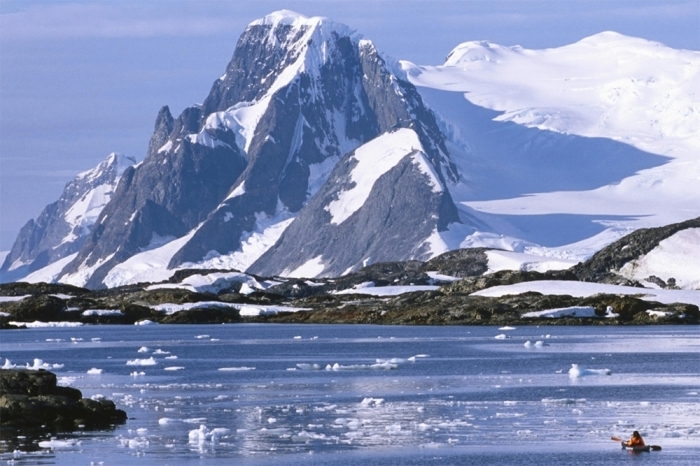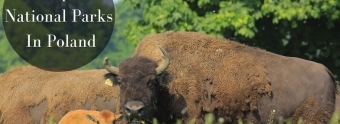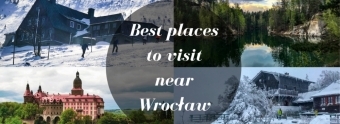Disturbing Signs From East Antarctica: An Interview With Esteemed Glaciologist
June 28, 2022 by Oliwia Gertych
Professor Sławomir Tułaczyk, the IGRD graduate, is a known Polish geographer, geomorphologist and glaciologist; now teaching at the University of California. He focuses his research work primarily on studying the ice sheet in Antarctica, Greenland and Iceland. In 2006, in recognition of his contribution to scientific research, a glacier in Antarctica was named after him. In the following blog, however, we quote him on a more critical issue, concerning potential changes to the Earth's environment.
The East of Antarctica was supposed to be inviolable
In April, a Polish journalist for the Gazeta.pl, Maria Mazurek, interviewed the professor asking about his view on climate change. It’s not good, he says. It has been known for a long time that West Antarctica, home to the famous Thwaites glacier - the 'doomsday glacier' - is vulnerable to global warming. Recently, however, there have been signals that the eastern part of the continent, previously generally considered rather resistant to climate change, does not have to be as safe as it was thought.
Journalist: There was a perception that East Antarctica is not very much affected by climate change and it’s safe when it comes to melting. Was that wrong?
Professor: Yes, and that was due to the lack of scientific evidence. It’s an inaccessible place, and difficult to study. It’s hard to find any geological evidence showing how the ice sheet there reacted to climate change in the past, and to conclude the future. In the ‘90s there was a heated debate on this subject in the glaciological world.
In 2020 you published the results of your research in Nature. The research indicated that East Antarctica was melting, at least from a geological point of view. What exactly did you discover?
We found pieces of calcite on the coast that had formed in subglacial lakes outside East Antarctica. By analyzing the isotopic composition, mainly of uranium isotopes, we could determine how long ago they formed, and establish the ratio of uranium 234 to isotope 238. Based on other studies, we know that the amount of isotope 234 in waters increases if these waters are isolated for a long time. The calcite we found was significantly enriched by this isotope. In our opinion, this indicates that this subglacial aquatic world was probably opened to the outside world during the warm interglacial that occurred about 400,000 years ago and when, we believe, part of the Antarctic ice sheet retreated. Since then, there has been no significant withdrawal of the ice sheet. The waters beneath it were isolated and enriched with the uranium 234 isotope. All this information can be extracted from the tests of the samples we found.
So it seems that even the huge masses of ice in East Antarctica are susceptible to melting.
Undoubtedly yes. This interglacial from around 400,000 years ago was a little warmer than the current climatic conditions. There’s evidence coming from tropical regions that sea levels were 10-20 meters higher.
What causes the ice to melt, then? And what impact does it have on water, snow, and ice on this continent?
Warming of the atmosphere mainly affects the ice shelves: water accumulates on their surface, and because it has a greater density than ice, if it collects in a crack, it bursts it, helps it to grow until the entire ice shelves break down. That’s what happened with the most famous breakup of the Larsen Ice Shelf 20 years ago in the west of Antarctica. However, we must keep in mind that a great deal of Antarctic ice is situated so high and it’s so cold up there, that a 1-2 degree warming will not make much difference in terms of melting on the surface.
Another process is related to the ocean waters: warmer waters approach those parts of the ice sheet that are submerged in the water and melt them more and more. It is much easier to achieve a high rate of ice melting if it is in contact with warm water than with a warm atmosphere. Let me give an example to illustrate this. On the surface, ice, even in warm climates, melts at a rate of about one meter per year. Meanwhile, in Antarctica, we have places where ice in contact with water melts at a rate of 100 meters a year. That’s what happens in the West, for instance on Thwaites Glacier.
How does the current state of Antarctica look?
In the middle of the continent, the amount of ice is slowly increasing, and the edges are nibbled more and more. It seems that the balance is negative, more ice melts than it adds. The situation has changed from more or less balanced around 30-40 years ago.
So what is the reality of conducting scientific research in Antarctica? I imagine research on climate change in this region is conducted through the study of ice cores.
Yes, ice cores tell us how the climate has changed, it is the best source of information on atmospheric changes. However, this approach takes a long and is very expensive. During my glaciological career of over 20 years, the Americans have made three such wells, including two deep ones. Each such program takes about 10 years and costs from tens of millions of dollars, in the case of a smaller project, to even several hundred million dollars.
How about the satellite data?
It was almost revolutionary. Now it’s possible to better select the places we want to go to and examine in detail what is happening under the ice cap. Satellite images show what is happening now and what happened 20-30 years ago.
Researching on the ice-covered desert
What does a research trip to Antarctica look like?
We fly to the main American station, McMurdo (it’s the largest Antarctic station, with around 1,000 people staying there in the summer). We are waiting for the right weather that will allow the plane to land at its destination, usually completely unprepared, where no one has landed before, so when taking off we must be sure that at least the weather conditions for landing will be good. After reaching, we throw our luggage into the snow (it often happens to be 10,000 kilograms), the plane leaves and we’re alone. We have to build a tent base and survive in it for three or four months. We are in contact with the station via satellite phones, which we can use to call for help if necessary. If the weather is favourable, help arrives in a few hours, otherwise, you can wait up to several days.
And what are the biggest dangers during an expedition like this one?
The crevasses. Since I’ve been doing this (and it’s been about 25 years), two of my colleagues have died falling into crevasses: one in Antarctica, and one in Greenland. When the snow blows with the wind, this trap is completely invisible.
You’ve visited Antarctica so many times that it makes a total of almost two years there. What do you associate this place with?
It's a bit like going to another planet. The most unusual, even crazy moments are when you are in the middle of the ice sheet. There are no mountains, no rocks, nothing. Flat terrain and snow. Suddenly, ice fog appears and you completely lose your visibility, you can't see what's under your feet or anything else around you. You are surrounded by something grey and white, it's hard for me to describe it, but it feels a bit like flying in the air. An incredible feeling. The return from Antarctica is also an amazing experience. There I am surrounded by an environment with no life, almost empty and barren, and then I return to a town in Northern California that is green, has a forest and a beautiful view of the bay - only then are such things appreciated.
And lastly, you have your glacier in Antarctica. Where exactly?
Yes. The Tułaczyk Glacier is located on the highest mountain in Antarctica, the Vinson Massif. High and already close to the Pole. I always laugh that it will be one of the last glaciers to stay in the world when everything else melts.
So a lot remains unknown, but one thing is for sure: Antarctica is going to melt.
All we know is that if the climate continues to warm so quickly, the Antarctic ice will shrink. The only questions are at what pace this melting will take place, and will there be any tipping or critical points that will accelerate it. This isn’t known yet, and this is the reason why we’re conducting research in Antarctica.
The interview has been translated and adapted from the gazeta.pl website.
Should you have any queries related to the Tourism & Hospitality studies at the University of Wrocław or if you need general information about the city, please write to us on social media - Facebook, Instagram, or contact us via email.
Oliwia Gertych
Oliwia is a Master's student of Spanish Philology at the University of Wrocław. She has hands-on experience in content creation, translation, and events management. Oliwia has an impeccable command of multiple international languages, such as Polish, English, Spanish, French, and Italian, making her a competent linguist. Apart from writing, she engages with the artistic community of the city as a violinist and a singer.
See also: LinkedIn, Facebook, Instagram.




































